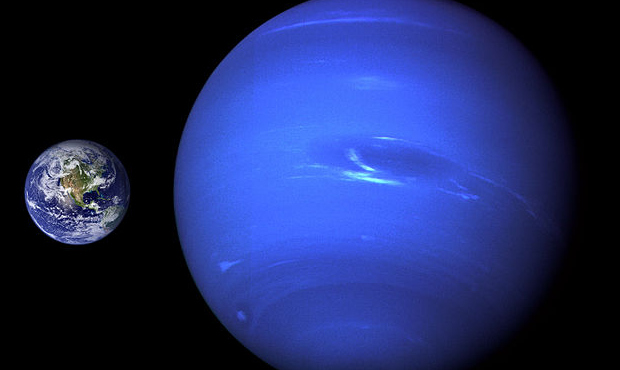2 ice giant planets, including Neptune, come into view in September
Sep 2, 2020, 3:00 PM

(NASA Photo)
(NASA Photo)
In ancient times, there were only five major planets, not including Earth.
The classical planets are Mercury, Venus, Mars, Jupiter and Saturn, which were observed by many civilizations around the globe.
It was not until March 13, 1781, that a new planet was added to this very select list of objects.
The credit for this discovery goes to astronomer William Herschel, who had stalked the skies for years with his small telescope and landed on this now famous planet by accident.
Back some 238 years in history, the seventh planet from the sun opened up a new era in astronomy by expanding the size of our known solar system by literally billions of miles!
Uranus sits out in the solar system, some 1.750 billion miles from us and takes some 84 years, to make one circuit or orbit around the sun.
Think of it this way: Uranus goes once around the sun in an average lifetime, if you think of that as 84 years.
After the discovery, Herschel had thought it proper to name the planet after King George III of England – Georgium Sidus.
This name was quickly removed, as planets and many other objects in the night sky are to be named after mythological beings or other things.
The name Uranus was proposed as the father of the night sky and the husband of Mother Earth, Gaia.
That name has remained and now Uranus is a major planet of our solar system.
Uranus has some 27 moons and is actually easy to spot in a pair of binoculars, being just at the limit of naked eye visibility.
As we enter the last days of October, Uranus comes to opposition on the night of Oct. 28 and will be visible with no moon in the sky for the next few days.
Here is a finder chart for Uranus in 2020.
And here is more detailed information on finding Uranus and tracking it live.
Uranus is very far from us – it takes light which travels some 670 million mph over 2.5 hours just to get there.
To learn more about Uranus, visit this interesting source.
Uranus will appear as a blue-green colored disk in a telescope and just finding it in our Arizona skies is a great achievement for you.
As we move father out into the darkness of the solar system, we approach the next and last of the major planets – Neptune.
Neptune was discovered back on Sept. 23, 1946, by astronomers Johann Galle and Urbain Le Verrier.
Neptune, like Uranus, is an amazing world of ice and gas in a frigid environment, some 2.8 billion miles from the sun. It orbits the sun once every 165 years.
Neptune is not within the reach of naked eye observation and does require a telescope to see.
Neptune is located in the constellation of Aquarius and is located high in our September skies after dark.
Neptune reached opposition and is best viewed Sept. 11.
Here is a finder chart for Neptune in 2020.
And here is more detailed information on finding Neptune and tracking it live.
Finally, more detailed information on the last major planet of the solar system is here.
Neptune has 14 known moons.
These two ice giants, swim in the depth of the celestial sea.
To print your own monthly star chart, click here.
To view satellites/dates/times of passage, click here.
Listen to the Dr. Sky Show on KTAR News 92.3 FM on Saturdays at 3 a.m.








